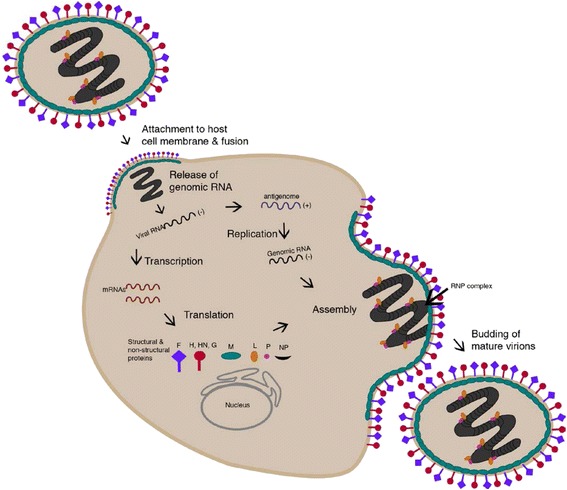Fig. 2.

Paramyxovirus Lifecycle. Attachment to the host cell membrane initiates the viral lifecycle and entry occurs by the release of the viral genome into the cytoplasm. The negative-sense RNA genome undergoes primary transcription to produce mRNAs. The viral genome is replicated in a two-step process catalyzed by the viral polymerase (composed of phosphoprotein (P) and large (L) protein components) where antigenome intermediates are produced from genomic templates before the production of negative-sense genomes. The helical nucleocapsid is formed by association of the newly synthesised nucleoprotein (NP) with the nascent genomic RNA. This newly formed structure then interacts with the RNA-dependent RNA polymerase complex (RNPs). RNPs are transported to the plasma membrane by M protein where they interact with surface glycoproteins for assembly, before membrane scission and release of virus particles. The figure was generated using Adobe Illustrator
